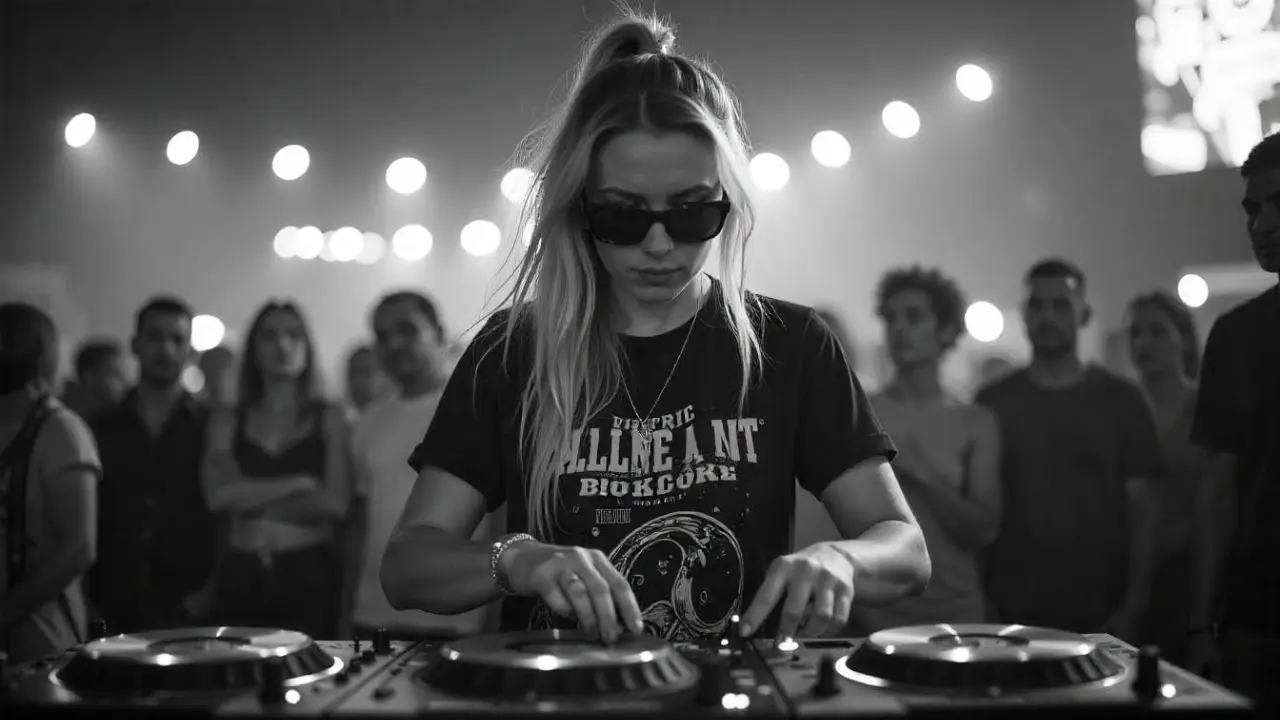Intro: The Pulse of a Revolution
In the dimly lit basements of the Bronx in the late ‘70s, young DJs turned turntables into time machines. They looped breakbeats from James Brown and other soul records, birthing a new culture from borrowed sounds. Sampling – lifting snippets of existing music to create something new – became the lifeblood of hip-hop. It was raw folk art and sonic collage rolled into one. But as this art form evolved from SP-1200 drum machines to FL Studio plugins, it also ran headlong into legal minefields. This guide journeys through sampling’s creative techniques, legal battles, and industry best practices, all with a high-energy narrative that challenges assumptions and exposes contradictions. Buckle up: we’re diving into hip-hop’s soul, where every loop has a story and every lawsuit has a lesson.
Creative Techniques: From Crates to Code
The SP-1200 to FL Studio: Evolution of the Chop
Picture a producer hunched over an E-mu SP-1200, the legendary sampler/sequencer introduced in 1987 that packed just 10 seconds of gritty sample time briffa.com briffa.com. That box, with its rubber pads and 12-bit crunch, single-handedly shaped golden-age hip-hop. Marley Marl, Pete Rock, and the Bomb Squad turned its limitations into a signature sound: punchy drums, low-fi loops, and creative chops. The SP-1200’s simplicity forced innovation – producers squeezed 32 user samples into its memory, truncating and pitching sounds to carve out new rhythms.
Fast forward to today, and a teenager on a laptop can do in seconds what took the old-school hours. FL Studio, Ableton Live, and other DAWs let you time-stretch, pitch-shift, and microslice with godlike precision. Yet, modern beatmakers still chase the holy grail: making digital sound human. They emulate the SP-1200’s swing and grit, or import vinyl crackle to “dirty up” pristine audio. The evolution from hardware samplers to software hasn’t changed why we sample – just how. It’s still about that feeling.
Legends of the Loop: Dilla, Madlib, Premier, Kanye
No guide to sampling is complete without paying respect to the greats. J Dilla turned the MPC3000 into an instrument of rhythmic revolution. He famously ditched quantization, allowing his drum hits to stumble just slightly off the grid, creating a drunken sway that came to be called “Dilla Time” – a clash of straight and swung rhythms that felt oddly human. His beats on Donuts (2006) – choppy soul snippets, filtered and refreaked – are loose, unpredictable, and deeply soulful. Dilla proved that imperfect timing could be perfect art.
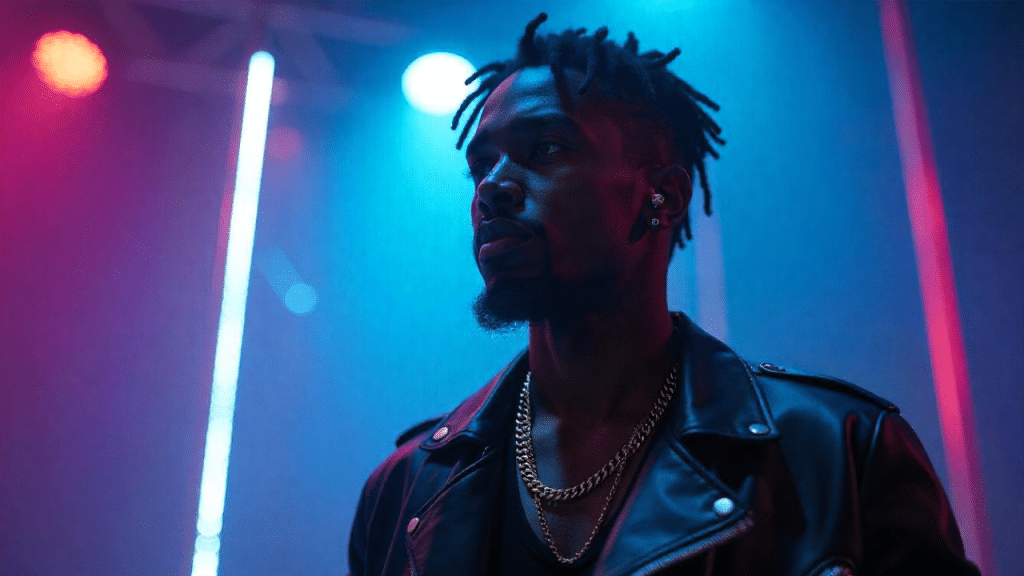
Then there’s Madlib, the mad scientist of samples. He’ll layer chaotic snippets from Brazilian psych records, Indian film scores, or 1930s jazz – often all in one track – purely by feel. Madlib’s work (like Madvillainy with MF DOOM) is dense and unorthodox, full of blink-and-you-miss-it micro-samples. It shouldn’t work, but it does – like a mosaic that only reveals its picture from a distance. In an era of tidy digital loops, Madlib keeps alive the spirit of crate-digging chaos.
On the flip side of chaos is DJ Premier, the epitome of precision. With Guru in Gang Starr, Premier pioneered the art of the hook scratch – sampling a vocalist’s one-liner and transforming it into a melodic, percussive chorus via turntable cuts. He chops one-second jazz piano stabs or horn blasts into hypnotic loops that anchor tracks like Nas’s “N.Y. State of Mind.” Premier’s approach is surgical: find the illest two-bar break, loop it to infinity, and let the rapper go off. It’s minimalism that somehow never gets monotonous.
And of course, Kanye West, who turned soul sampling into stadium anthems. Early in his career, Kanye popularized “chipmunk soul”, speeding up classic ’70s soul vocals to a higher pitch hotnewhiphop.com. But beyond the vocal tricks, Kanye has a knack for the perfect flip: taking a familiar song (Chaka Khan’s “Through the Fire”, Ray Charles’s “I Got a Woman”) and recontextualizing it with fresh drums and emotion. His Blueprint and College Dropout-era beats sparked a wave of producers digging for Motown and Stax records to flip. Kanye’s later work got more experimental – think chopping up Hungarian rock (“New Slaves”) or obscure prog (“No More Parties in L.A.”), proving sampling is a limitless art when you have daring vision.
AI and Digital Crate-Digging: The New Frontier
Today, crate-digging doesn’t always mean dusty fingers in dollar bins. It might mean diving into a YouTube rabbit hole at 3 AM, or even using AI tools that conjure vintage-sounding samples out of thin air. Yes, you read that right: AI can now generate “new” music in the style of old records, giving producers endless material without ever hitting a record store. Tools like Google’s Music AI Sandbox hint at a future where producers type in “70s soul ballad” and an algorithm serves up a custom sample. This is raising existential questions: if a computer can simulate the feel of a lost Marvin Gaye B-side, is it crate-digging or code-digging? Is it cheating or just the next evolution?
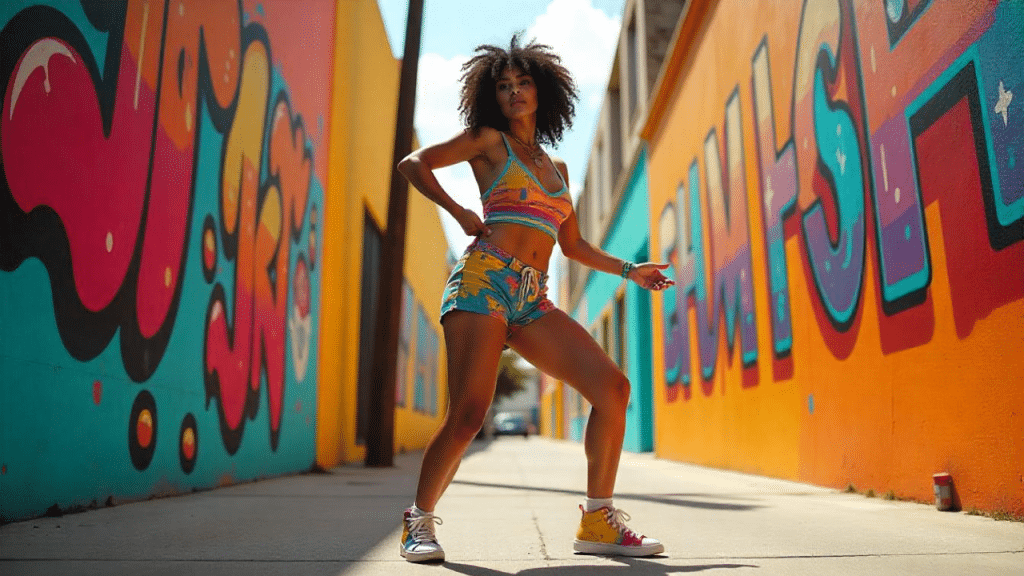
At the same time, digital tools are turbocharging traditional sampling. Want to isolate a dusty drum break that has music over it? In the past, you’d need the multitrack or some clever EQ. Now, AI stem separators like Serato STEMS literally let you mute the instruments and grab just the drums (or any element) from a full mix. Producer DJ Khalil marveled, “You get a record and you’re like: that drum break is dope but I wish I could get rid of some of that music… Now you can do it. It’s just insane” djmag.com djmag.com. The magic of sampling has always been about making the old new – and now technology is giving the old an even newer lease on life.\
Unconventional Sources: Beyond Vinyl
Hip-hop’s sampling ethos has always been “if it sounds dope, use it” – no matter where it comes from. Early producers mostly pulled from funk and soul records (the music they grew up on). But as the art matured, everything became fair game. Video game soundtracks? Sure – Wu-Tang Clan sampled Playstation game dialogue on “Wu-Tang: Shaolin Style.” Film dialogue? Absolutely – think of MF DOOM peppering cartoon clips throughout his beats, or Dr. Dre lifting dialogue from Scarface. Ambient noise? Why not – producers have sampled city street sounds, TV news clips, even NASA recordings from space.
Today’s producers might sample a YouTube vlog, a TikTok meme, or a random Spotify folk song with 12 plays. And the community celebrates digging deep: the more obscure or unexpected the source, the more respect it commands. This crate-digging mentality – whether it’s physical or digital crates – is about unearthing gems. It challenges the idea that sampling is a lazy shortcut; on the contrary, finding that magic snippet is an art in itself. As one crate-digger put it, “It’s a hunt for the DNA of a popular song you’re in love with. An addiction to origins.” In hip-hop, the producer is an archaeologist and alchemist rolled into one, sifting through the world’s sounds and saying “This 3-second clip – I can build a universe around it.”
An Akai MPC2000 sampler, a classic tool of 90s hip-hop producers, exemplifies the hardware that defined early sampling techniques (public domain image).
Legal Insights: From Wild West to Courtroom Showdowns
“Thou Shalt Not Steal”: The Biz Markie Bombshell
For years, sampling was hip-hop’s Wild West – a creative free-for-all where no clearance meant no problem. That all changed in 1991 with a courtroom drama that shook the music world: Grand Upright Music, Ltd. v. Warner Bros. Records, better known as the Biz Markie case. Biz Markie, the lovable “Clown Prince of Hip-Hop” who had everyone singing “Just A Friend,” got sued for a relatively harmless track called “Alone Again” that sampled a Gilbert O’Sullivan piano riff victor-li.com. Biz had actually asked for permission and been denied – he used the sample anyway (a common move back then). But this time, the hammer came down.
Federal Judge Kevin Duffy opened the case by quoting the Bible: “Thou shalt not steal”. That set the tone. In a blistering opinion, Duffy dismissed the entire hip-hop sampling practice as plain theft. He even ordered the album pulled from stores. Biz Markie’s team argued sampling was an art form and common practice, but the judge was unswayed. The message was clear: unauthorized sampling = infringement, period. This case effectively slammed shut the Wild West era and scared the hell out of record labels. As a direct result, sample clearance became a must for any commercial release – or else.
Biz’s career never fully recovered. Tongue-in-cheek, his next album was titled All Samples Cleared!, but the damage was done. The Biz Markie case signaled that hip-hop had to play by new rules, and it emboldened other artists to lawyer up. Soon, a barrage of lawsuits hit the genre.
De La Soul vs. The Turtles: $2.5 Million for 12 Seconds
In the same early ‘90s dragnet, another beloved group got caught: De La Soul. Their blissful 1989 album 3 Feet High and Rising was a sampledelic wonderland – more than 60 songs were sampled, from Hall & Oates to French instructional records. One interlude track, “Transmitting Live from Mars,” used a mere 12-second loop from The Turtles’ 1968 song “You Showed Me” briffa.com briffa.com. It was essentially background music in a jokey skit. But The Turtles’ members, Howard Kaylan and Mark Volman, didn’t find it funny. They sued De La Soul in 1991 for a whopping $2.5 million briffa.com.
Kaylan famously quipped, “Sampling is just a longer term for theft. Anybody who can honestly say sampling is some sort of creativity has never done anything creative.” briffa.com Ouch. De La Soul, the peace-loving hippies of hip-hop, suddenly were painted as thieves. Ultimately the case settled out of court for a reported $1.7 million briffa.com – a huge sum at the time (and arguably more than the album earned). The lawsuit terrified labels; it proved even a tiny, relatively obscure sample could lead to monster payouts.
The chilling effect of these cases was immediate. The golden age of unrestrained sampling (mid-’80s to early ’90s) quickly gave way to a much more cautious era. Legends like Public Enemy and the Beastie Boys, who built masterpieces by stacking dozens of samples, had to drastically change approach. (The Beasties had cleared many samples on Paul’s Boutique in ’89, but by ’92’s Check Your Head, they played live instruments to avoid legal snares.) The courts had made it clear: sample at your own peril.
The Verve and The Rolling Stones: Bittersweet Royalties
It’s not just hip-hop – sampling lawsuits rocked other genres too. One of the most infamous battles was over “Bitter Sweet Symphony” by The Verve in 1997. The Britpop band got permission to sample a five-note string section from an orchestral cover of a Rolling Stones song. In theory, it was cleared – they agreed on a 50% royalty split with the rights holder (former Stones manager Allen Klein). But when “Bitter Sweet Symphony” blew up worldwide, Klein pounced, claiming The Verve used more of the recording than allowed. He voided the deal and demanded 100% of the royalties – or else pull the song off the shelves. The Verve, basically blackmailed, surrendered. They gave up all royalties and writing credits. For over 20 years, Mick Jagger and Keith Richards were officially the songwriters of “Bitter Sweet Symphony,” earning thousands every time it played – even though their contribution was a sample of a cover arranged by someone else! It wasn’t until 2019 that the Stones members returned the rights to The Verve’s Richard Ashcroft as a goodwill gesture. Talk about a bittersweet ending.
This case, though outside hip-hop, became a cautionary tale in the industry. It highlighted how ruthless rights holders could be, and how a song built on a sample could effectively be hijacked. If it happened to The Verve, it could happen to a rapper or producer just as easily.
Modern Minefields: Kanye West’s Lawsuits and Loopholes
Even after the ’90s crackdown, artists continued to push the envelope – sometimes paying the price. Kanye West, known for his sample-based hits, has faced several legal challenges. He and Jay-Z were sued by soul artist Syl Johnson for using a chunk of Johnson’s 1967 song “Different Strokes” in “The Joy” without clearance. Syl Johnson claimed Kanye had actually tried and failed to license it for an earlier album, then used it anyway – echoing the Biz Markie scenario. They settled out of court in 2012 for an undisclosed sum.
Then came “Bound 2” off Yeezus (2013), built around a heavy sample of the Ponderosa Twins Plus One’s obscure soul song “Bound.” The 12-year-old kid singer on that 1971 track, Ricky Spicer, was a grown man when he heard Kanye’s hit on the radio – and promptly filed suit. He hadn’t been credited or paid for his voice being basically the chorus of “Bound 2.” Spicer sued Kanye for copyright infringement and violation of his right of publicity en.wikipedia.org en.wikipedia.org. After a legal tussle, they settled in 2015. These episodes show that even superstars aren’t immune – if anything, deep-pocketed stars are bigger targets.
To avoid issues, many producers employ loopholes and workarounds. One common trick is interpolation – replaying or re-singing the part of a song instead of sampling the original recording. By doing that, you only have to clear the composition copyright (pay the songwriters) but not the sound recording copyright (usually owned by a label). For example, rather than sampling the exact guitar riff from a record, you hire a session player to replay it note-for-note. It’s not foolproof (you still need permission from the original writers), but it can be cheaper and legally safer. Another method is obscuring the sample – chop it, filter it, reverse it – make it unrecognizable. Some hope this falls under de minimis use (too minimal to matter) or that it simply slips under the radar. However, U.S. courts largely killed the de minimis defense for sampling – basically saying if you can tell it’s the same, it’s infringement. (One court infamously said “Get a license or do not sample” in a 2005 case involving N.W.A.) and you can find more excellent Royalty-Free Rap Beats, Hip Hop, Afrobeats, Trap, Samples and Instrumentals at Beats To Rap On.
Ethical Dilemmas: Who Gets Credit? Who Gets Erased?
There’s an ethical side to sampling beyond the legalese. On one hand, sampling pays homage and can resurrect careers of forgotten artists. When Nas samples a 1970s soul singer, suddenly a new generation is digging that original song, putting streaming money in the old artist’s pocket. Many artists, like Bob James (whose jazz-funk tune “Nautilus” is one of the most sampled songs ever), eventually came around to respect hip-hop producers for “transforming” their music in new ways. Bob James said, “I never felt like it was music that just copied… I like the bizarre and unpredictable nature of it.”.
Yet, sampling’s history also has stories of original creators feeling exploited or erased. The Amen Break is a classic example – a 6-second drum solo from a 1969 B-side by The Winstons that became the backbone of so much hip-hop, jungle, and drum & bass. It was sampled thousands of times, but the band never saw a dime (they didn’t copyright the beat). Decades later, fans crowdfunded money for the Winstons’ surviving member as a thank you, a gesture outside the legal system to “do the right thing.” There’s a paradox: sampling as an art form is about uplifting pieces of old records into new relevance, but the legal system can reduce it to taking without asking.
Hip-hop has long argued that sampling is a revolutionary art, not a lazy shortcut. It’s taking the crumbs from the table of the music industry and baking new bread – an act of survival and creativity. Public Enemy’s Chuck D likened sampling to folk art: passing down musical riffs like oral tradition. But others counter: if you’re making millions off someone’s riff, shouldn’t they get a cut? The tension is real. Where do we draw the line between inspiration and infringement? If a producer samples 100 songs for an album, can all 100 original artists meaningfully get credit, or does it dilute authorship of the new work? There’s no easy answer. What’s clear is that the ethics often lag behind the practice.
Industry Best Practices: Navigating the Sample Maze
Clearances and Crew: How the Pros Do It
In the modern music industry, if you want to sample and stay lawsuit-free, you need to clear the sample – which means getting permission (and likely paying) both the owner of the composition (songwriting) and the owner of the master recording. Major labels have entire departments or retain specialists for this. The undisputed queen of sample clearance is Deborah Mannis-Gardner, who’s cleared samples for everyone from DJ Shadow to Drake. When an artist signs to a label, one of the first questions for an album with samples is: “Do we have the budget to clear these?” If not, something’s gotta go.
For independent artists, the process is trickier and often prohibitively expensive. Say you’re an indie rapper with a dope beat that samples a Beatles song. If the label finds out, they could charge six figures or just flat-out refuse (especially the notoriously protective Beatles catalog). Many indie projects fly under the radar on mixtapes or SoundCloud with uncleared samples, but the moment there’s real money or a Spotify release, beware.
One tactic labels use is “pre-clearing” samples during production – basically checking before a song is finished if a sample is likely to get cleared. If a high-profile sample seems dicey, a producer might swap it out early to save time. Some producers also keep detailed notes of every sample in a track (timings, sources) to make the clearance process smoother. Gone are the days when you could just show up with a finished album of 20 uncleared samples and hope for the best – a major label simply won’t release it and risk a lawsuit.
Sample Subscription Services: The New Crates
Welcome to the age of sample subscription services like Tracklib, Splice, and Output’s Arcade. These platforms offer a different solution: a huge library of sounds and music that’s already pre-cleared or original, so you can use them freely (or for a small fee). Tracklib, for example, hosts multitracks of real songs from various eras; you can legally license a sample for rates like $50 + a percentage of royalties depending on the usage. Major artists are onboard – from J. Cole (who used a Tracklib sample on “Middle Child”) to Drake. Tracklib even charts the samples used by big producers, emphasizing that digging on their platform is the new form of crate digging. It’s a game-changer for producers who don’t have label resources – you can handle clearance in a few clicks.
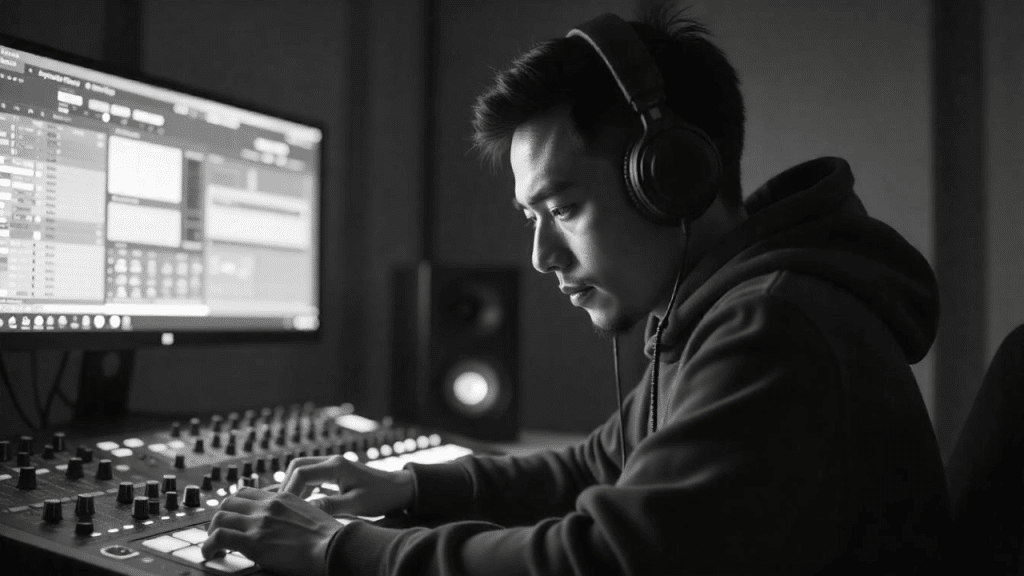
Splice offers a different angle: mostly shorter royalty-free loops and one-shots. Melodic loops, drum breaks, vocals – all cleared for use because they’re either original recordings made for Splice or public domain. Splice made headlines (and sparked debates) when some big hits used identifiable Splice loops, meaning potentially hundreds of producers had that same loop. For instance, the producer of Lil Nas X’s “Old Town Road” found the banjo loop on the internet (similar to Splice) – and suddenly that loop was used in one of the biggest songs ever, leaving other users of it in the dust. This raises a creative question: when everyone has access to the same sample pool, how do you stand out? Some argue it’s made production a bit homogenized, others say it just challenges producers to flip the sounds in unique ways. Either way, Splice loops are ubiquitous now; for better or worse, many listeners don’t care where the sound came from as long as it bangs.
Streaming Changed the Game
One reason sample clearance has become even more important is streaming. In the old days, if a label failed to clear a sample properly, worst case they might get sued or have to settle – but they could also stop pressing CDs and move on. In the digital era, an uncleared sample can delay a release or get a song taken down globally with one notice. De La Soul famously had their early albums trapped in digital limbo for decades because Tommy Boy Records hadn’t cleared all the samples for modern use. The original contracts didn’t anticipate streaming, so the music languished offline. It wasn’t until 2021, after Tommy Boy was sold, that efforts were made to clear everything and finally bring those classics to Spotify. Imagine: one of hip-hop’s greatest albums (3 Feet High and Rising) was inaccessible to new listeners for years, largely due to sample clearance nightmares. Streaming has made the industry realize that back-catalog samples need clearance too, not just new releases.
Streaming also altered the economics. When sampling a song meant potentially sharing physical album sales, maybe you’d bite the bullet. But in streaming, where 1,000 plays might earn a few bucks, giving up 50% or more of a song’s revenue for a sample can feel brutal. Some producers have shifted to using more interpolation or original composition, saving the truly juicy samples for mixtapes or limited releases. Others double down, arguing that a great sample is worth the split because a hit song’s exposure and touring can far outweigh the streaming pennies.
Future Shock: Will AI Samples Replace Digging? Will Laws Catch Up?
Looking ahead, we’re at a fascinating – and kind of scary – juncture. AI-generated samples are getting better by the day. We might soon face a bizarre question: If an AI creates a perfect James Brown-style grunt, who owns it? There’s no James Brown copyright on an AI imitation, so theoretically it’s free and clear. But what if the AI was trained on copyrighted music? The legal world hasn’t even begun to untangle that. Major labels are already suing AI companies for scraping artists’ music to train algorithms. It’s a new frontier reminiscent of sampling’s early days – a Wild West with huge creative opportunity and legal ambiguity.
Some predict a future where sample clearance as we know it becomes obsolete: either because AI can make any sound you want legally, or because laws might evolve a more nuanced “fair use” for sampling. So far, that latter hope seems distant – copyright law barely budges. If anything, big music publishers have grown more aggressive, monetizing old catalogs and watching for infringements like hawks (they even register melodies with ContentID on YouTube to auto-claim ad revenue). But hip-hop has always thrived in the margins of legality and innovation. Producers will keep pushing until (or unless) the laws catch up to recognize sampling as a legitimate form of creation deserving some exemptions or compulsory licensing scheme.
The Beat Goes On
Hip-hop began as a cultural rebellion – poor kids looping rich man’s music to craft their own identity. Sampling was never just about sound; it was about affirmation, transformation, and conversation across time. Grandmaster Flash looping a drum break was saying, “Listen to what the drummer did – it’s ours now, and we’ll make it the heartbeat of a new song.” In doing so, hip-hop challenged the music establishment’s notions of ownership and originality. It exposed a contradiction: in an art form built on referencing the past (music, like language, is inherently intertextual), where do we draw the ownership lines?
This guide has journeyed from the gritty pads of the SP-1200 to the algorithmic crates of AI, from the courtroom showdowns that yelled “Thou shalt not steal” to the modern industries finding compromise solutions. We’ve seen that sampling can be both a revolutionary art form and at times a legal tightrope. Is it a lazy crutch? When done poorly – just looping a hit song without much change – some might say yes. But at its best, sampling is alchemy. It’s how a mundane French cooking record became the backbone of De La Soul’s groove, or how a forgotten funk 45 found new life as the hook for a generation.
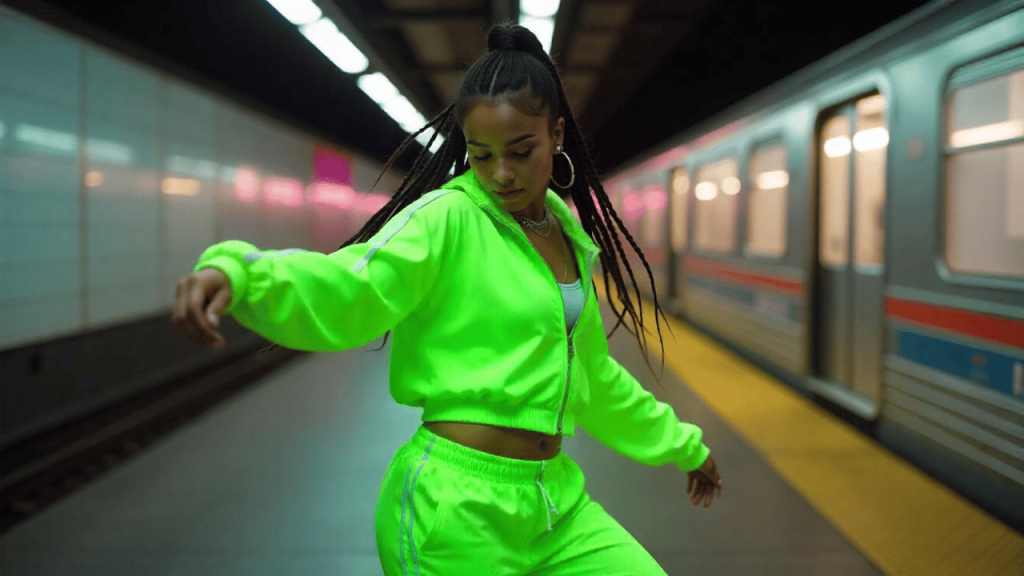
The debates will rage on. Purists will bemoan that kids don’t dig through vinyl anymore, while futurists will argue that expanding the sound palette with AI or sample services is the logical progression. Somewhere in the middle lies the truth: hip-hop’s methods will keep evolving, and so will the conversation around them. What’s certain is that the ethos of hip-hop sampling – that bold spirit of “by any sounds necessary” – remains urgent and raw. It’s the sound of making something from nothing, of flipping the script and subverting expectations.
As you create or just appreciate sample-based music, remember the lineage and the layers. Every sample carries echoes of another era, every chop is a dialogue between artist and artifact. Hip-hop producers are both storytellers and historians, even if unconsciously so – they let the past breathe again in the present. And as long as there are beats to chop and rules to bend, you can bet the story of sampling is far from over. The beat goes on, and the battle – creative, legal, philosophical – goes on with it.
In the immortal words scratched on countless tracks: “It’s the joint!” Whether that joint is assembled from old records or new algorithms, the important thing is that it moves us. And that is something no lawsuit can stop.
